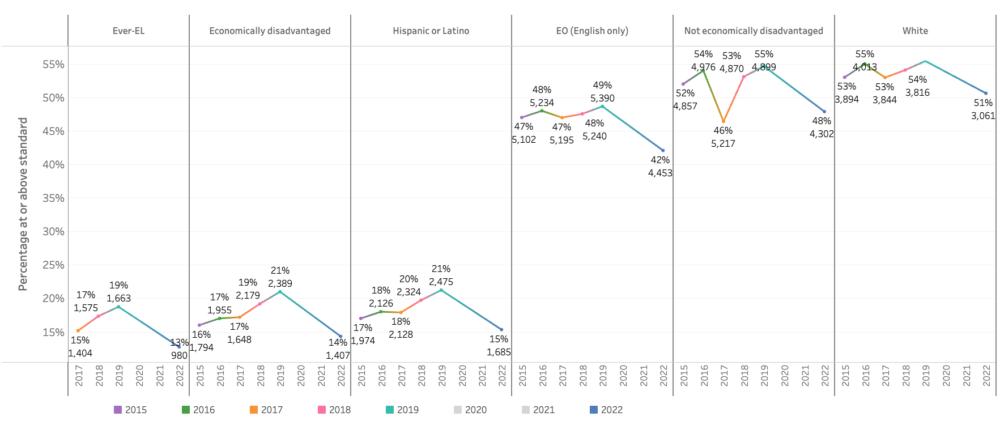Dear community member,
Over the last two years, many students were impacted in the areas of social emotional wellness, behavior, and academic achievement. Addressing the impact on learning less is a top priority for our schools. While our educators and families have long had a clear sense of the impacts of the pandemic, we are now seeing a picture emerge in assessment data. Data from the recently released California Assessment of Student Performance and Progress (CAASPP) tests, conducted last Spring and released last week, provides the most comprehensive snapshot since the start of the pandemic.
Santa Cruz County students meeting or exceeding state English standards fell to about 44%, a drop of nearly 4% since 2019, the last year for which the full assessments were conducted. The number of students meeting math standards fell to 30% in the same period, a drop of about 5%. Both declines are in line with the statewide trend, and underscore existing inequities. The COE’s Data Portal offers a way to explore the data by district and demographics using an equity lens. It shows the extent of the persistent discrepancies in performance between students classified as language learners, Hispanic and Latino, and economically disadvantaged students as compared to their peers, across both mathematics (shown in the embedded image) and English.
The data provides valuable insight, but we must be cautious about the conclusions we draw from it. For instance, we know that remote learning did not work as well for all of our students, particularly underserved students. Yet California’s assessment data shows among the lowest rates of learning loss in the nation, alongside one of the longest periods of remote learning. This finding highlights the complex reality of the pandemic’s impacts and, in all likelihood, the positive effects of our ongoing work to address learning loss.
As I see it, this data is most useful in two ways: as a new baseline, and as a renewed call to action that underscores the importance of doing all we can to addressing the opportunity gap and ensuring our schools can continue to provide safe, excellent, and equitable environments for all students to learn and thrive. And that’s exactly what we intend to do.
Yours in education and equity,
Dr. Faris Sabbah
County Superintendent of Schools
